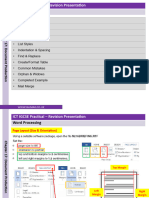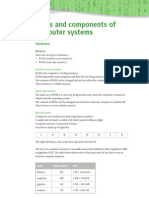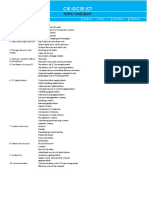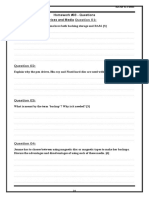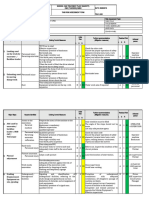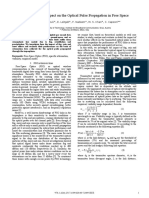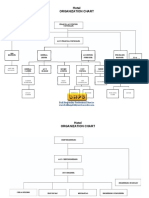100% found this document useful (1 vote)
394 views5 pagesYou Need To Make Sure That You Can Do The Following
The document provides instructions for tasks that may be required on the ICT IGCSE Practical Paper 2 exam for Word Processing. It lists 28 tasks including opening and saving files, inserting headers and footers, formatting text, inserting tables, images, and charts, applying stylesheets, and proofreading the document. Students are asked if they can complete each of the listed tasks.
Uploaded by
SeamanCopyright
© © All Rights Reserved
We take content rights seriously. If you suspect this is your content, claim it here.
Available Formats
Download as DOCX, PDF, TXT or read online on Scribd
100% found this document useful (1 vote)
394 views5 pagesYou Need To Make Sure That You Can Do The Following
The document provides instructions for tasks that may be required on the ICT IGCSE Practical Paper 2 exam for Word Processing. It lists 28 tasks including opening and saving files, inserting headers and footers, formatting text, inserting tables, images, and charts, applying stylesheets, and proofreading the document. Students are asked if they can complete each of the listed tasks.
Uploaded by
SeamanCopyright
© © All Rights Reserved
We take content rights seriously. If you suspect this is your content, claim it here.
Available Formats
Download as DOCX, PDF, TXT or read online on Scribd
/ 5
